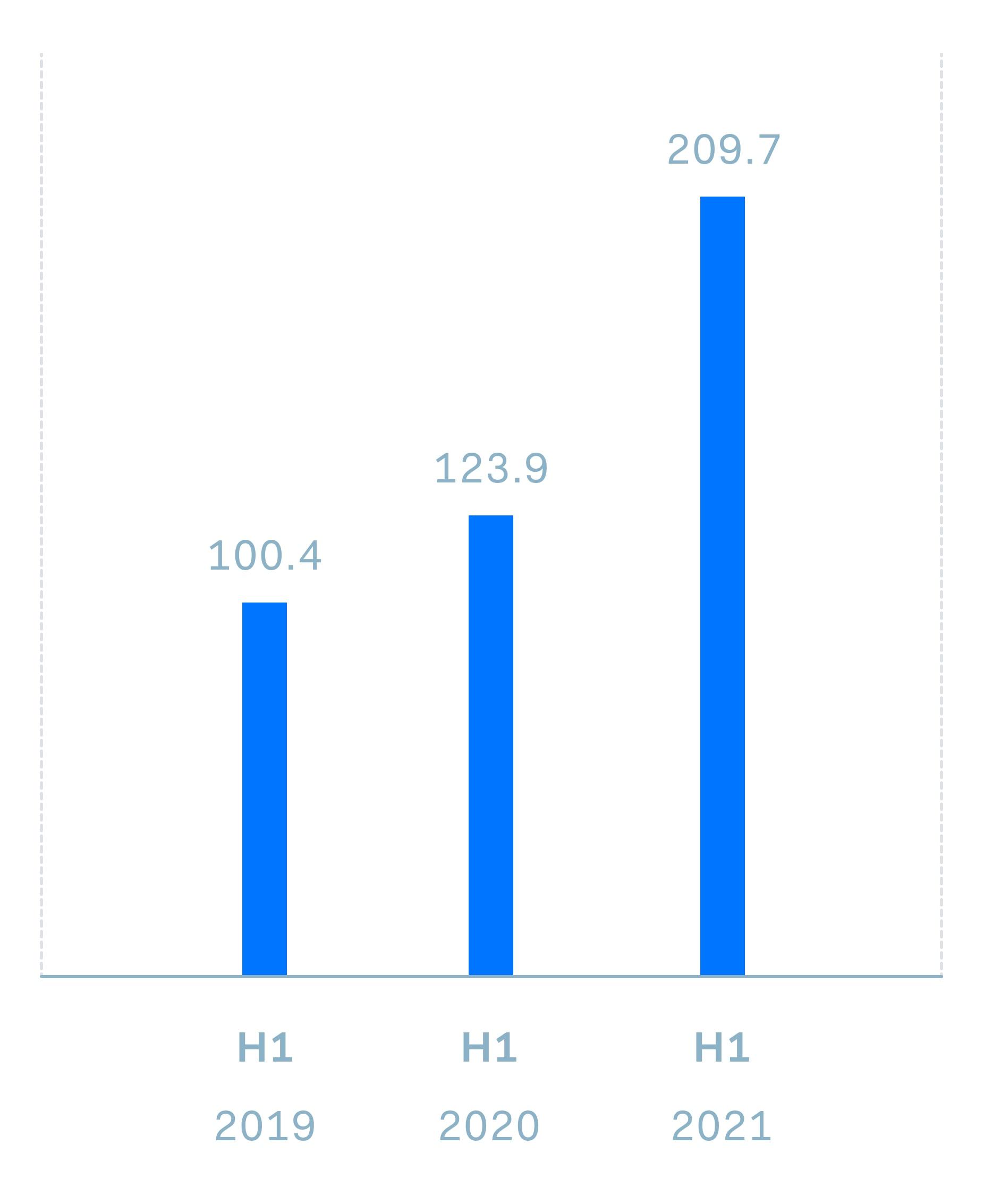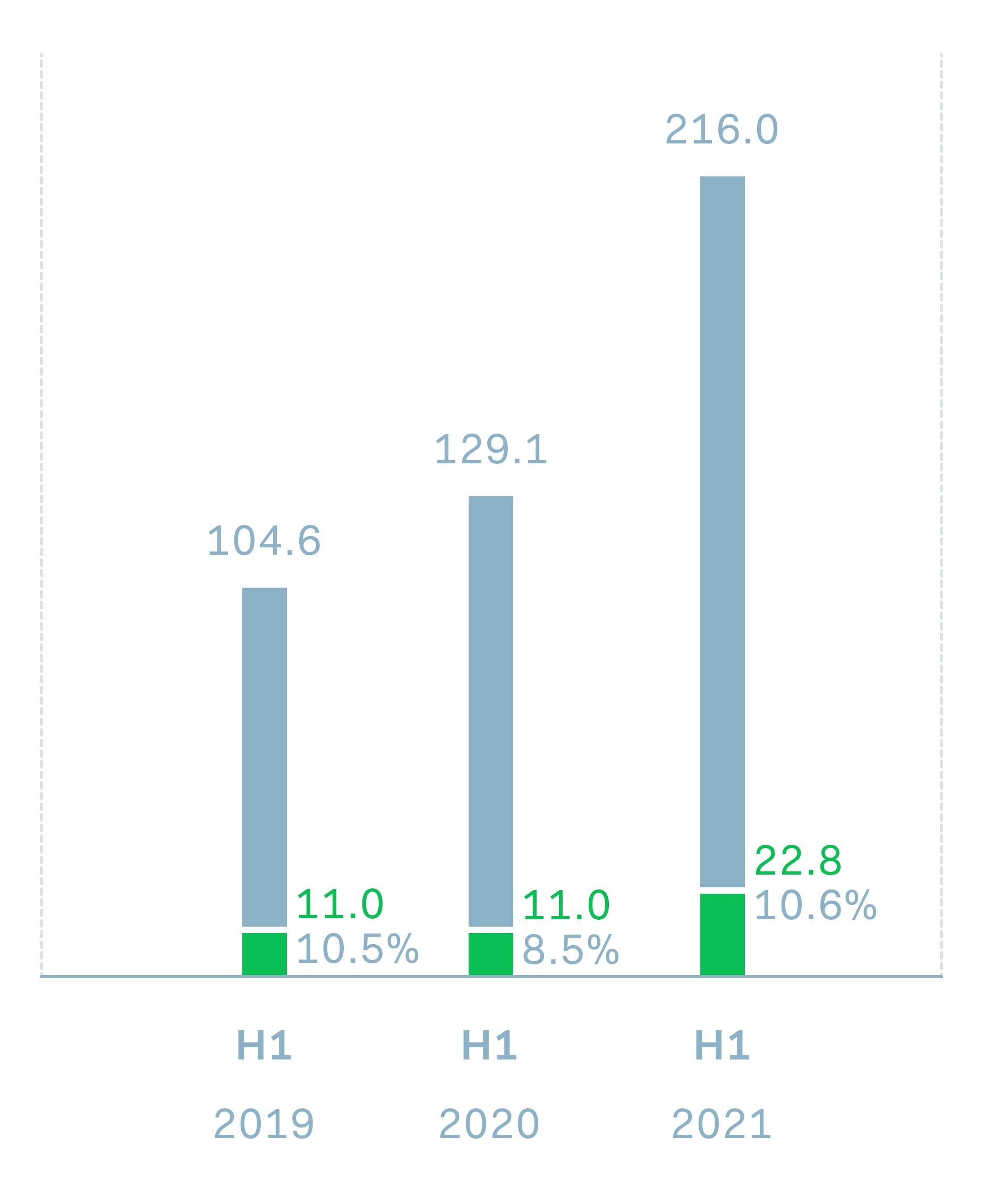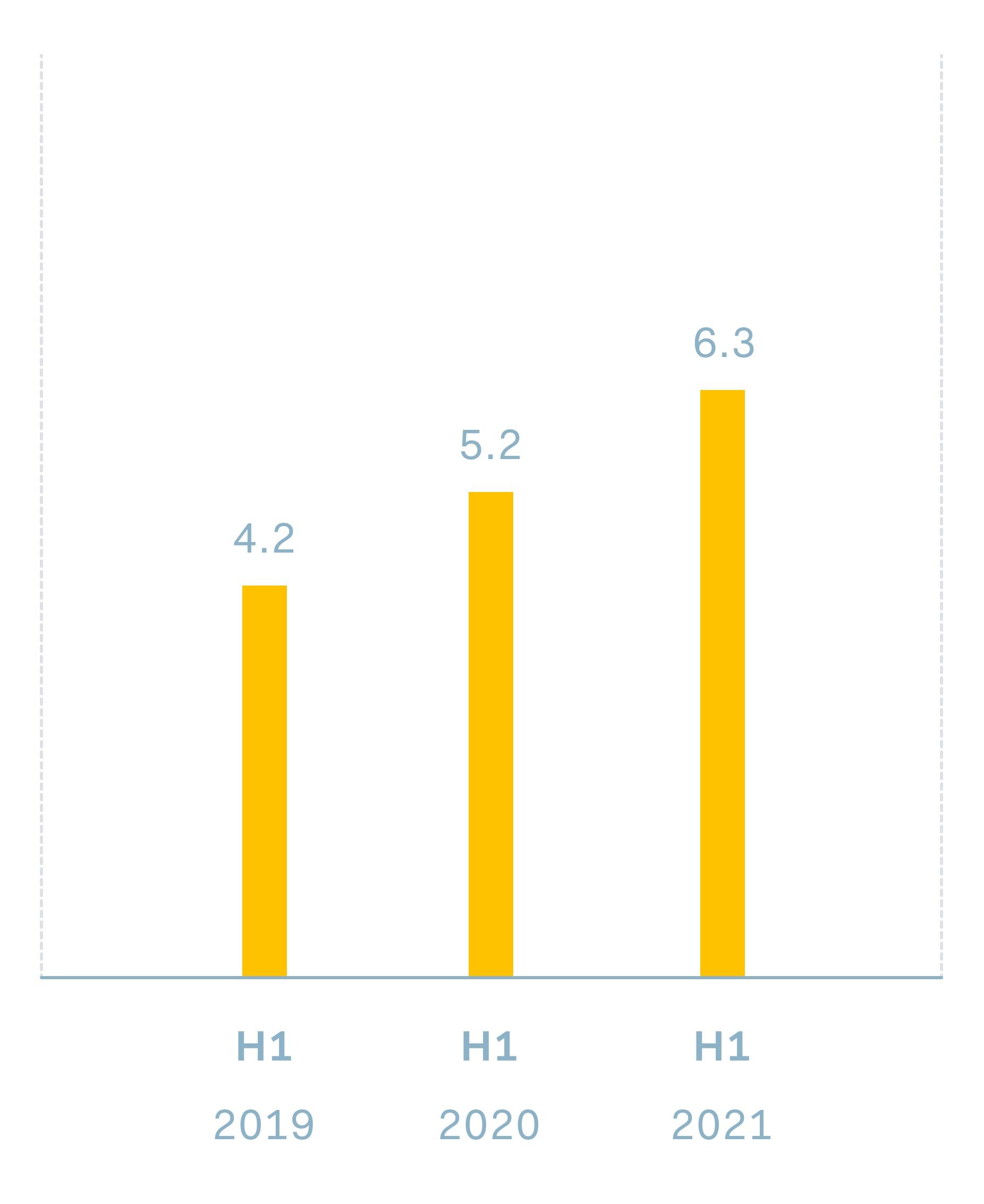H1 2021
Shareholder letter

* Please refer to the Interim Condensed Consolidated Financial Statements for further detail on historically restated figures.
Enterprise merchant base continues to drive majority of volume growth
Continuous addition of household names to the platform paired with minimal churn
Enterprise merchants' priorities continue to set product development strategy
Expanding our licensing footprint to support our merchants globally — e.g. US branch license, acquiring capabilities in Japan and the UAE
Increasingly advanced product suite providing opportunities in an ever-evolving space
Adyen for Platforms solves for the challenges of companies running the increasingly dominant business model of our time
Opportunities for our 3DS2 solution continue to arise due to the ongoing trend towards strong customer authentication
Additional use cases for Adyen Issuing as a result of product design — now in the realm of expense management
Momentum in unified commerce and increased retail footprint
POS volume doubled year-on-year as unified commerce became increasingly business critical for merchants
Unified commerce solution available to larger part of the market via platforms and partnerships
Longer-term shifts in shopper preferences now ingrained due to COVID-19 pandemic
A culture-first approach to building Adyen
Growing the team to 1,954 FTE across 26 offices globally
Simultaneously building attractive workspaces and the online infrastructure required for remote working
Increasing our ESG focus with more comprehensive disclosures
Enterprise
The enterprise segment continues to drive the largest share of our growth. By building trusted partnerships with these merchants, we are consistently able to win additional volume through implementing new sales channels, geographies, and product lines with them. We see this is a consequence of our product development strategy – driven directly by merchant needs.

Figure 4
Enterprise volume in EUR billions.
Unified Commerce
As shopper preferences continue to shift towards a unified experience, a multi-channel strategy is becoming business critical for businesses globally. By integrating the online and offline channels in a single platform, we’re at the forefront of the new era of commerce with our unified commerce solution.

Figure 5
POS volume evolution, including share of total processed volume in EUR billions
Mid-market
In mid-market, we build to offer the full strength of the Adyen solution to merchants of all sizes via simplified integrations. Our value proposition to these merchants is grounded in our ability to future-proof their payments set-up via simplified access to the single platform, which leaves space to focus on growing their business.

Figure 6
Mid-market volume in EUR billions. We define mid-market merchants as merchants processing up to €25 million annually on our platform. In H1 2021, 4,278 merchants met this definition.
Interim Condensed Consolidated Financial Statements
This page contains information that qualifies, or may qualify, as inside information within the meaning of Article 7(1) of the EU Market Abuse Regulation.
Important Regulatory Notice
This announcement is not for publication, distribution or release, directly or indirectly, in or into the United States of America (including its territories and possessions, any state of the United States of America and the District of Columbia), Canada, South Africa, Australia or Japan or any other jurisdiction where such an announcement would be unlawful. The distribution of this announcement may be restricted by law in certain jurisdictions and persons into whose possession this document or other information referred to herein comes should inform themselves about and observe any such restriction. Any failure to comply with these restrictions may constitute a violation of the securities laws of any such jurisdiction.
Adyen’s securities have not been and will not be registered under the U.S. Securities Act of 1933, as amended, and may not be offered or sold in the United States without registration thereunder or pursuant to an available exemption therefrom. Neither this document nor the information contained herein constitutes or forms part of an offer to sell, or the solicitation of an offer to buy, securities in the United States.
This announcement is not an offer of securities or investments for sale nor a solicitation of an offer to buy securities or investments in any jurisdiction, including the United States, Canada, South Africa, Australia or Japan. Neither this announcement nor anything contained herein shall form the basis of, or be relied upon in connection with, any offer or commitment whatsoever in any jurisdiction. No action has been taken that would permit an offering of securities or possession or distribution of this announcement in any jurisdiction where action for that purpose is required. Persons into whose possession this announcement comes are required to inform themselves about and to observe any such restrictions.
The information contained in this announcement is for background purposes only and does not purport to be full or complete. No reliance may be placed for any purpose on the information contained in this announcement or its accuracy or completeness. This announcement does not purport to identify or suggest the risks (direct or indirect) which may be associated with an investment in Adyen securities. Any investment decision in connection with Adyen securities must be made solely on the basis of all publicly available information relating to such Adyen securities.
This communication may be restricted by law in certain jurisdictions and persons receiving this communication should inform themselves about and observe any such restriction and must not under any circumstances forward this communication to any other person. Failure to comply with such restrictions may violate securities laws of any such jurisdiction.
Unsponsored ADRs: As of October 10, 2008, the US Securities and Exchange Commission (SEC) published revisions to Exchange Act Rule 12g3-2(b) which permits depository institutions to establish unsponsored ADR programs without the participation of a non-US issuer. Adyen NV does not consent to the establishment of any unsponsored ADR program, and further does not authorize, endorse, support or encourage the creation of any such unsponsored ADR program in respect of its securities. Adyen NV will not actively, directly or indirectly participate in the creation of any unsponsored ADR program. Adyen NV specifically disclaims any liability whatsoever arising out of or in connection with any unsponsored ADR program. Adyen NV does not represent to any depository institution or any other person, nor should any depository institution or any person rely on a belief that the website of Adyen NV includes all published information in English or that Adyen NV otherwise satisfies the exemption criteria set forth in Exchange Act Rule 12g3-2(b).























